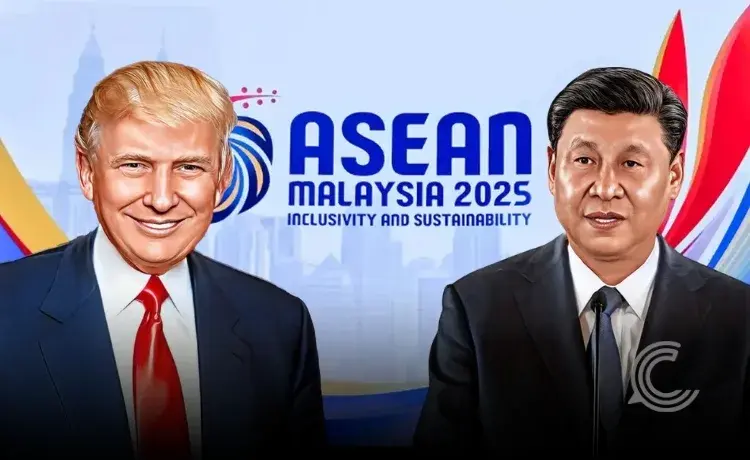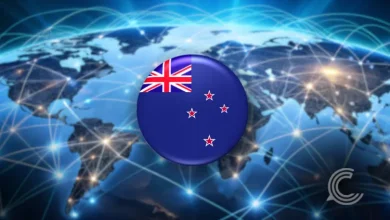With Trump gone, World leaders Strengthen Trade Pacts to offset US Tariff Threats

Key Highlights–
- With Donald Trump exiting the summit, world leaders at the Association of Southeast Asian Nations (ASEAN) meeting in Kuala Lumpur shift focus to building trade alliances and countering looming U.S. tariffs.
- On the sidelines, the U.S. and China struck a tariff-pause agreement, prompting ASEAN and global partners to explore alternative economic pacts.
- The China-backed Regional Comprehensive Economic Partnership (RCEP) emerges as a possible buffer against U.S. trade pressure, covering roughly 30 % of global GDP.
As US President Donald Trump departed the Association of Southeast Asian Nations (ASEAN) summit in Malaysia, world leaders quickly shifted gears to discuss how to safeguard their economies from the ripple effects of US tariffs and shifting global trade dynamics. The high-stakes meeting in Kuala Lumpur brought together leaders from China, Brazil, Canada, the European Council, and the 11-member ASEAN bloc, all seeking to reinforce economic partnerships and expand regional cooperation in the absence of a strong US engagement.
Trump’s Exit, ASEAN’s Pivot
With Trump and Secretary of State Marco Rubio heading to Japan, the tone inside the summit turned pragmatic, from power politics to policy planning. Many participants emphasized the need to deepen multilateral trade frameworks such as the Regional Comprehensive Economic Partnership (RCEP), which was seen as a buffer against Washington’s tariff threats. According to diplomats, the underlying goal was evident: to strengthen economic resilience, rebuild investor confidence, and recalibrate global trade networks in preparation for a shifting, post-American trade landscape.
Building New Economic Ties Amid Tariff Pressure
With Trump and Secretary of State Marco Rubio flying to Japan, the summit room was left to a mix of ASEAN leaders, Chinese officials, and representatives from Brazil, Canada, and the European Council to reach an agreement on trade partnerships. Notably, these conversations are taking place under the looming threat of US tariffs.
Also Read | US and China Agree on Trade Framework to Avert Escalating Tariffs
China’s presence looms large. Beijing is expected to push for multilateral trade cooperation and strengthen its regional ties at a time when US protectionism is forcing many Asian economies to reassess their strategies.
Critically, the RCEP, a China-backed trade bloc which involves 10 ASEAN members along with Australia, Japan, New Zealand, and South Korea, covers almost 30 % of global GDP and is increasingly seen as a hedge against US tariffs.
Supply-Chain Stakes & Rare-Earth Leverage
Beyond tariffs, supply-chain resilience and access to critical raw materials have become defining issues in the global economic landscape. At the ASEAN summit, European Council President Antonio Costa met Chinese Premier Li Qiang to raise growing concerns over Beijing’s expanding control of rare earth minerals. The materials are essential for manufacturing electric vehicles, semiconductors, and renewable energy technologies. Costa urged Beijing to ensure “fluid, reliable and predictable supply chains,” warning that persistent disruptions could slow global recovery and heighten economic vulnerabilities across Europe and Asia alike.
China currently dominates around 90 percent of the world’s supply of rare-earth magnets and minerals, giving it immense strategic leverage in the ongoing trade struggle with the United States. However, as reported by Reuters, such dominance allows Beijing to influence pricing and access in sectors that power the global digital economy. For many ASEAN nations, diversifying mineral sources and building resilient logistics networks have now become as critical as tariff negotiations themselves, signaling a shift from short-term trade deals to long-term economic self-reliance.
What It Means for Asia & Beyond
For ASEAN nations and their global partners, the current moment is less about ad-hoc diplomacy and more about structural trade positioning. With U.S. tariffs remaining steep and protectionism on the rise, many states are looking to diversify away from dependence on Washington.
The RCEP bloc represents a practical option for many of these economies. Additionally, offering a 30% of GDP-sized alternative framework for trade and investment. Meanwhile, the US–China framework deal reached on the sidelines eases immediate tensions, but also underscores the altered trade terrain.
The bottom line: Trump’s departure from the summit did not mean Washington’s influence waned; rather, other actors stepped into the vacuum, accelerating efforts to build trade pacts that can absorb or respond to the US tariff policy shocks.



